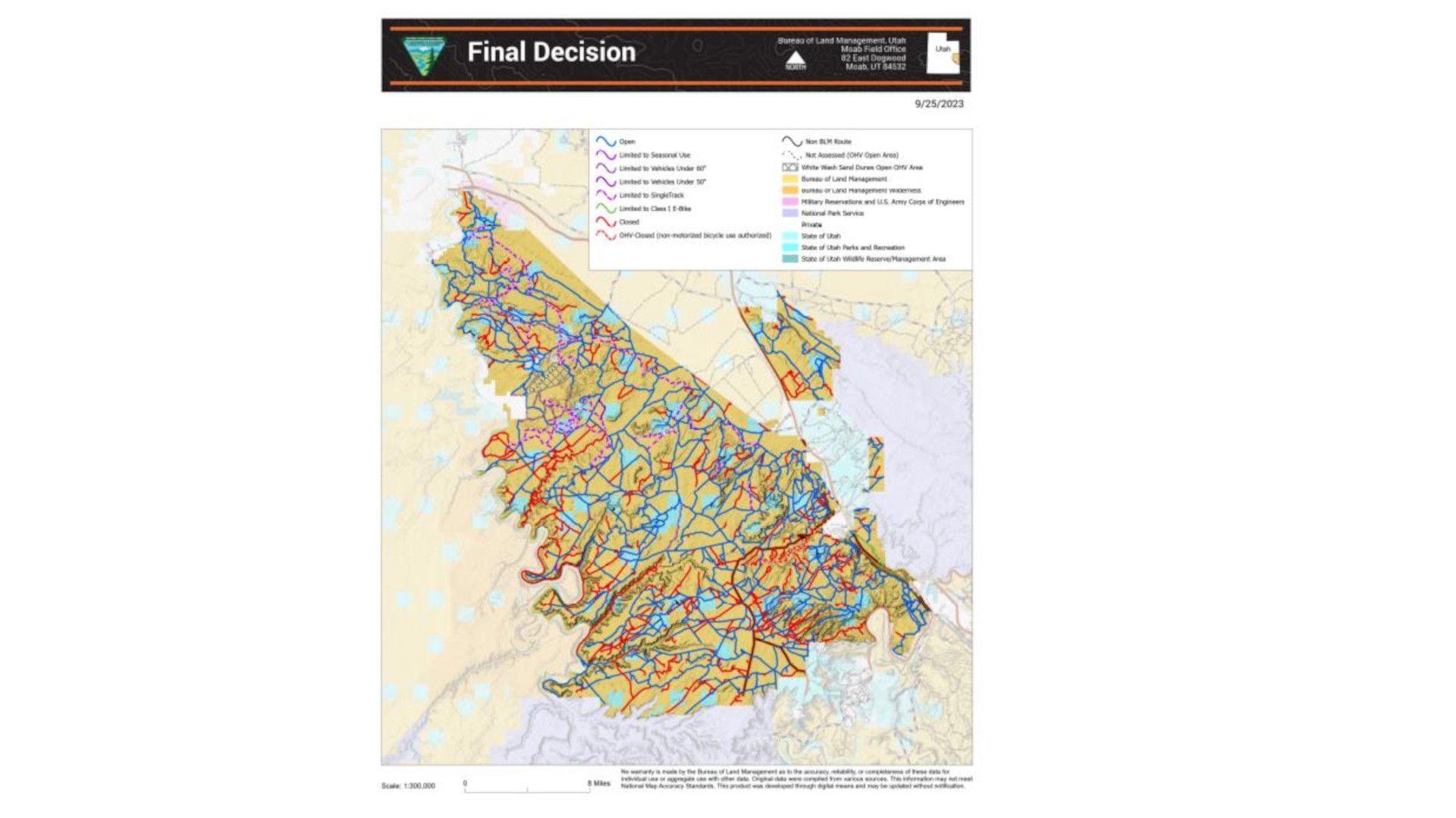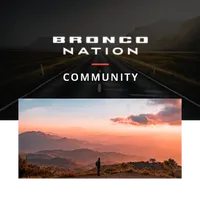If you’ve already attended Bronco Off-Roadeo, you learned about how to Tread Lightly. The broadest definition of which is to stay the trail and minimize the impact you and your Bronco make on the land. For this reason alone, I wish everyone would attend an Off-Roadeo to get this education. After I attended an Off-Roadeo myself, it’s a primary reason why I decided to become a guide. I am passionate about keeping trails open and have spent hundreds of hours in the field, city council chambers and boardrooms, trying to keep Southeast Utah open and accessible to motorized recreation.

Many of you may have heard about the recent decision by the Bureau of Land Management to close trails in the Moab area. Let me provide a little more detail and some “truths” about what is happening. I understand this is an emotional and opinionated topic and I am going to simply share with you what the facts are.
On September 28, 2023, the BLM decided to close 317 miles of trails and countless dispersed campsites through a travel management plan called the Labyrinth Rims Gemini Bridges proposal. This environmental “review” was in response to a settlement in a lawsuit in 2017 by SUWA (Southern Utah Wilderness Alliance) against the Department of the Interior. Because of the settlement, environmental assessments must occur in Utah. Each motorized route in this area (over 300,000 acres) was defined and reviewed in this specific assessment, starting in March of 2021. According to the BLM website press releases, input from the public was sought in 2022, and over 10,000 comments were received to a proposal that offered the public four choices: A, B, C, D. The “A” proposal was keeping everything the same, there were very few changes, while option “B” was the most restrictive and would result in the most route closures, over 400 miles, as seen in this graph from the BLM website.

The final decision was not one of the choices, and how the decision was reached is not completely clear but it is closest to option B. This leaves a total of 812 miles of motorized routes open in this area.

As seen in this map, the closures impact areas north and west of Moab towards the Green River area. It’s fairly difficult to discern which routes are which, but the red routes are the new closures. If you are familiar with Moab, the town is at the bottom right corner of the map. The impacted southern border is Hwy 278 along the Colorado River. To the north is I-70, to the west is the Green River, and you can see Hwy 191 running north to south on the middle right of the map.
As you can see from the map, the entire area isn’t closed. Main routes and 96% of Jeep Safari routes remain open, including Gemini Bridges, Poison Spider, Golden Spike, Gold Bar Rim, Metal Masher, and 3D. Popular trails that have been closed include Hey Joe Canyon, Mashed Potatoes (a personal favorite of mine), Day Canyon Point, Hell Roaring Canyon, and Hidden Canyon.

Following the announcement of the closure, there were responses by the State of Utah and organizations like Blue Ribbon Coalition and Utah Public Lands Alliance, of which I am currently a board member. The first step was filing an appeal, which would prevent the trails from closing for a longer period. That was not granted so the trails are now currently closed. There is also action from the state of Utah. Utah Senator Mike Lee and Representative John Curtis introduced a bill entitled the Historic Roadways Protection Act. Senator Lee’s bill prohibits using federal money to enact new travel plans in Utah until all the historic road cases currently being adjudicated have been settled. Additionally, Sen. Lee’s legislation pauses any previous plans by the BLM to change how these lands are used until the courts decide on these historic roads.
As actions occur or updates are received, I’ll share additional articles on any progress made toward reopening the trails.
What I wanted to touch on next is the ramifications of these closures. Whether these are areas you have personally recreated in or not, these closures impact you, especially if you plan to visit Moab in the future. With reduced trails and roads to recreate on, the impact on those existing routes is increased. Fewer roads = more people on them. Impact can be defined in the way the trails are treated, but also in what are called “user conflicts.” This term has been used frequently as a reason for closure, because different recreating groups are having problems with each other. For example, boaters on the river are disturbed by ATV noise or seeing dispersed campers on the rim, ruining their scenery. Yes, that was a reason for some of the lost miles. We can blame the boaters for being oversensitive, and probably they were, but you can bet that not every motorized user was well-behaved in their interactions with them.
This is where I’ll tie Moab back in with Tread Lightly because we risk further trail closure when we can’t get along.

The TREAD in Tread Lightly is an acronym and stands for the following principles:
T - Travel Responsibly
R - Respect the Right of Others
E - Educate Yourself
A - Avoid Sensitive Areas
D - Do your part
What I like about Tread Lightly is that it teaches personal responsibility and accountability. We are using trails that cross both public and private lands. We will encounter other users, motorized and non-motorized. How we behave, our stewardship determines the availability of these routes for future use.
I’ll give another example: over the holidays, we used a few of the more difficult trails in Moab and had a wonderful time. At the same time, we were implementing Tread Lightly practices without even thinking about them.

For example, on Cliffhanger, we not only stayed the trail, but we closed the gate behind us, “no matter what the cows said”, we respected the rights of others by stopping to let the mountain bikers pick their routes uphill, we were careful to avoid sensitive areas when we hiked to see the petroglyphs, and we cleaned up after ourselves and others. Did we have some bikers offended because we were there? Yes, but we chatted with them, asked them if they needed anything, and got “most” of them watching us take turns on the rocks. This is taking accountability, and it is your responsibility to do the same, including educating yourself on the trails and knowing where you can and cannot go, even being friendly when others are not. Saying, “I didn’t know” is sending messages to key groups that, “these trails should be closed because I am not responsible”.

If everyone took the time to educate themselves, even by taking a free online 101 Awareness Course, how much better off would we be? We are all setting our New Year’s resolutions now. Will you set one about how you’ll be a better Bronco enthusiast in 2024? Even if you don’t off-road or overland, you can support keeping trails open for your friends who do.

Comments
You must log in or register to post here.